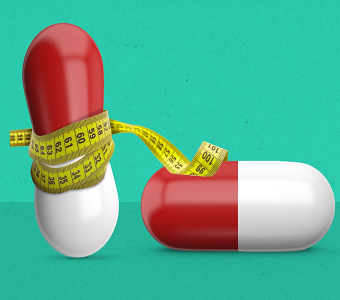Even after adding $30 billion in market value over the last four months, shares of Biogen Idec (BIIB) moved higher on Friday morning with the release of details from a phase 1 – yes, phase 1 – trial of the experimental Alzheimer’s treatment, aducanumab (BIIB037).
Biogen first teased the results late last year, saying that the amyloid-clearing antibody produced statistically significant improvements in cognitive function and amyloid clearance in patients with the degenerative disease. On Friday, investors got a first look at the data during a presentation in Nice, France, and the stock was up 10% (about $10 billion in market value) in pre-market trading.
Aducanumab produced a dose- and time-dependent reduction of amyloid plaque in the brain, as well as a statistically significant positive effect on clinical decline based on two exploratory endpoints: the Mini Mental State Examination (MMSE) and Clinical Dementia Rating (CDR) scales.
At week 54, aducanumab treatment resulted in a statistically significant reduction of amyloid plaque in the 3 mg/kg (p<0.001) and 10 mg/kg (p<0.001)] dose arms. The reduction of amyloid plaque in the 1 mg/kg arm was not significant. 54-week data from a newer 6 mg/kg arm, added partway through the study, will be available later.
On the MMSE, patients receiving placebo worsened by an average of 3.14 at 54 weeks. In the 1mg/kg arm, the change was 2.21; 0.75 in the 3 mg/kg arm; and 0.58 in the 10 mg/kg arm. Compared to placebo, this apparent slowing in cognitive decline from the 3 mg/kg and 10 mg/kg doses was statistically significant (p <0.05).
On the CDR-SB, patients in the placebo group worsened by an average of 2.04 at 54 weeks. The worsening was 1.70 in the 1 mg/kg arm, 1.33 in the 3 mg/kg arm and 0.59 in the 10 mg/kg arm. Just the 10 mg/kg’s slowing of clinical decline was statistically significant (p <0.05).
The important takeaway: the reductions appear to be dose-dependent, meaning the drug is “active”.
This was an interim analysis of the PRIME study, testing BIIB037 in 166 early Alzheimer’s patients. The placebo arm had 40 patients, the 1 mg/kg had 31, 3 mg/kg had 33, 10 mg/kg had 32. A 6 mg/kg (n=30) dose arm was added further into the study in order to identify an ideal dose, which may be split between 10 and 3 mg/kg.
The most worrying safety event was an increased incidence of ARIA-E (edema, or brain swelling) in patients receiving the highest dose, and especially in patients with a variant of the APOE4 gene. In ApoE4 carriers, the incidence of ARIA-E was 5% in the 1 mg/kg and 3 mg/kg arms, 43% in the 6 mg/kg arm, and a whopping 55% in the 10 mg/kg arm. This is why BIIB began testing a 6mg dose.
While investors are celebrating, it’s important to keep in mind that these are small sample sizes. This is the most encouraging data from the amyloid-clearing class of drugs over the years, but it was similar optimism that precluded major phase 3 blowups for products like Elan’s (ELN) Bapineuzumab and Eli Lilly’s (LLY), solanezumab.




